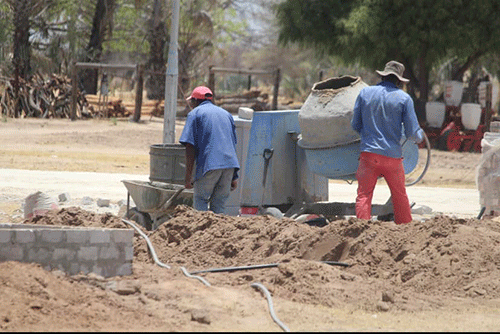The real value of building plans approved decreased during the first quarter of 2023. This leading indicator for future construction activity, decreased year-on-year and quarter-on-quarter by 27.1% and 33.3%, respectively.
“The decline in this variable does not bode well for the construction sector’s outlook. This state of affair may, however, be set off by the afore-mentioned positive outlook in the sphere of government-led construction works,” reads the quarterly bulletin from Bank of Namibia (BoN) released recently.
Building plans are described as an excellent economic barometer, as it creates direct jobs as well as income and tax revenue for the State, and significantly contributes to strong economic performance.
As such, the persistent declines are not a promising sign for the uptick of domestic economic activity after the impact of the Covid-19 pandemic, among other challenges in the economy.
Furthermore, the central bank added that activities in the construction sector displayed mixed signals, year-on-year, during the period under review.
“Government expenses earmarked for public construction work programmes increased in real terms by 37.1% and 12.9%, year-on-year and quarter-on-quarter, respectively. In the meantime, the real value of buildings completed remained weak, declining by 29.9% and 22.7%, year-on-year and quarter-on-quarter, respectively,” reads the report.
BoN further stated that construction activity is projected to only show a marginal decline of 0.8% during 2023, an improvement from the large decline of 14.8% registered in 2022. The improvement, it said is expected to arise from the rebound in Southern African Customs Union (SACU) revenue and the revived emphasis to prioritise infrastructure and capital spending, as stated in the 2023/24 fiscal budget.
This is expected to lead to a break in the declining trajectory, which the sector had maintained over the past six years, stemming from the drop in major construction projects in the economy.
Central debt
The report also touched on the debt stock of the central government, which continued to increase over the fiscal year, driven by a rise in both domestic and external debt. Total government debt stock stood at N$142.5 billion at the end of March 2023, representing an increase of 13.45% during the year under review.
“Total debt as a percentage of gross domestic product (GDP) stood at 66.9% at the end of March 2023. Going forward, the total debt stock is anticipated to rise to 70.1% of GDP at the end of FY2023/24 but then, given the primary surpluses on the budget, moderate to 66.2% of GDP at the end of 2025/26,” explained the bank.
Meanwhile, government expenditure is estimated to rise during FY2023/24, compared to the previous fiscal year partly owing to the addition of expenditures outside the budget which were previously not included in the total expenditure budget ceiling.
Government expenditure rose notably in 2022/23, although at a somewhat slower pace than revenue. Going forward, government expenditure is estimated to rise moderately in the subsequent years reaching N$89 billion in FY2025/26, as government pursues fiscal sustainability.
Moreover, regarding revenue over the medium-term expenditure framework (MTEF) period, central government revenue is estimated to rise further to N$79.8 billion in FY2025/26, mainly due to higher SACU receipts as well as company taxes, income tax on individuals and VAT, on the back of anticipated positive growth in economic activity.


